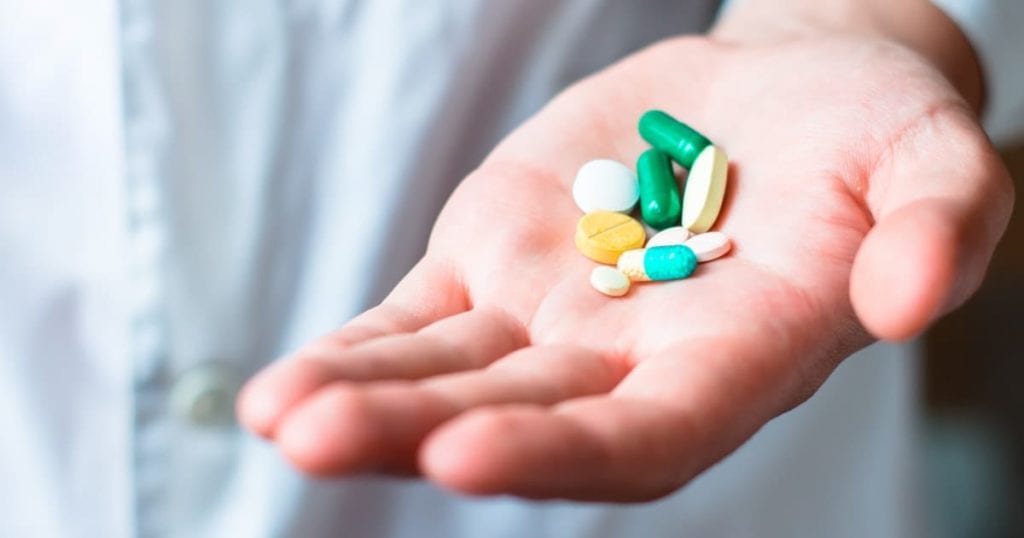By Robert Matylewicz, DO, ABAM, Medical Director at The Ranch PA The opioid epidemic continues to surge ahead with seemingly no end in sight. Drug overdose has surpassed motor vehicle deaths as the leading cause of U.S. accidental deaths with opioids leading the charge, contributing to 33,091 deaths in 2015. We don’t have a foolproof solution to the problem. What we do know from the data is that medications like buprenorphine, naltrexone and methadone when used in combination with behavioral therapies seem to offer some glimmer of hope as an addiction recovery program.
Types of Medication-Assisted Therapies for Opioid Use Disorder
There are three types of medication-assisted therapies (MAT) approved by the FDA for the treatment of opioid use disorder. The goal of all three is to decrease cravings and prevent relapse by aiding in the recovery process, which also involves going to support meetings and counseling.
Buprenorphine
Buprenorphine is commonly prescribed under the brand name Suboxone, a combination of buprenorphine and naloxone. Suboxone is a partial opioid agonist given monthly via an under-the-tongue tablet or film and prescribed in a qualified physician’s office. Buprenorphine works to prevent cravings by occupying the opioid receptor. It’s a potent drug with potential for abuse. The addition of naloxone helps prevent abuse. Naloxone gives Suboxone a “ceiling effect” that prevents euphoric feelings no matter how much a person ingests. Suboxone treatment is highly regulated and legal guidelines require that it’s administered along with a complete care program that includes counseling, drug screenings and psychosocial support. Suboxone users will need to slowly taper off the drug if they decide to discontinue it. Some clients will transition from Suboxone to Vivitrol.
Naltrexone
Naltrexone is an opioid antagonist and can be taken in a daily pill form or as a monthly, extended-release injectable under the brand name Vivitrol. Naltrexone blocks the euphoric feelings from heroin by binding to opioid receptors in the brain. If a person uses opioids while on Vivitrol, the drug will block the effect of the opioid. People on the drug must be diligent in abstaining from opioids as they’ll have reduced tolerance to the drugs and are therefore at risk for overdose if they relapse, and if they stop using Vivitrol and use opioids, the overdose risk is high. Vivitrol is desirable to some people because it doesn’t produce the withdrawal symptoms that can be experienced when discontinuing long-term use of Suboxone or methadone. Vivitrol is not a controlled substance like Suboxone or methadone, so can be prescribed by any healthcare provider.
Methadone
Methadone is a slow-acting, full opioid agonist and can only be administered in a federally licensed methadone clinic. Methadone clinics treat addiction by giving people a high tolerance to opioids. Physicians may prescribe methadone for pain purposes only. Methadone is prescribed in daily liquid and pill forms. Though methadone can be an effective treatment for opioid use disorder, it’s classified as a Schedule II drug by the Drug Enforcement Administration and has high risk for potential abuse. When a person chooses to discontinue methadone treatment, they must undergo medical detox. It’s a complex process and they can suffer severe withdrawal symptoms if not monitored in a medical setting. Of the three FDA-approved MATs, I only recommend methadone under rare circumstances, such as if a person is allergic to buprenorphine or naltrexone.
Why Medication-Assisted Therapy Is Necessary
Most people don’t like to be on meds. Usually when I prescribe medication for any type of ailment, be it high blood pressure, diabetes or opioid use disorder, the first question I get is, “When can I come off this?” There is no simple answer for that. It depends on the individual, what they want and how they are doing. Personally, as a doctor, I don’t like to strap people to meds, but sometimes, that’s what is needed. In the case of opioid addiction, here are some reasons why medication-assisted therapy is usually necessary, and why it’s hard to predict how long it will be necessary:
These aren’t healthy people
The thought of being prescribed medication for an indefinite amount of time makes some people uncomfortable, but the reality is that the people who are being prescribed these medications aren’t healthy and thriving in life. These are people at real risk for overdose and death. By the time I see them, I may be prescribing Suboxone or Vivitrol to a person who has overdosed already. Similar to a cancer patient who undergoes chemotherapy or a diabetic who takes insulin, the opioid-addicted individual needs these medications in order to live because they are sick.
Addiction is a chronic disease
We know that addiction is a chronic, progressive illness and it is defined as such by the National Institute on Drug Abuse, the American Medical Association, the American Society of Addiction Medicine and other medical organizations. Addiction changes the brain. It impacts the reward center and creates deficits in memory and motivation. Over time, if left untreated, addiction becomes more debilitating. Compare it to other chronic illnesses like diabetes or high blood pressure. You don’t take a person off the medications that helped improve those conditions after a couple of months if they’re doing better. All this is to say that when physical dependence on a substance like heroin has developed, people can’t “just stop” using it without severe, negative consequences (including possible death).
The relapse data doesn’t lie –
Similar to other chronic illnesses like cancer, diabetes and heart disease, addiction can go through a remission-relapse cycle. Some research has shown relapse rates for people addicted to heroin and other opioids at around 90% — and relapse can happen quickly, within a matter of days. Preliminary reports on use of medications like buprenorphine/naloxone for treatment of opioid use disorder indicate that half of those treated were still abstinent 18 months after beginning the medication. Of those, 61% were still abstinent 3.5 years later. With relapse from opioid use disorder not just possible, but very probable, it makes sense to draw on all lines of defense available. These medications aren’t a suit of armor or a golden shield. They need to be used as part of comprehensive treatment that includes counseling, 12-step support groups or 12-step alternatives, addiction education and lifestyle changes. Their value is in providing people relief from the physical discomforts of withdrawal and intense cravings that may lead to relapse. When people aren’t consumed by cravings or withdrawal symptoms, they’re better able to focus on addressing the underlying causes of their addiction, making positive changes and rebuilding their lives.

